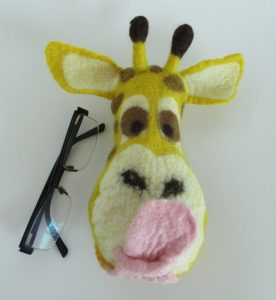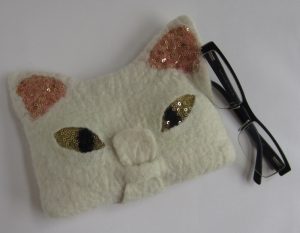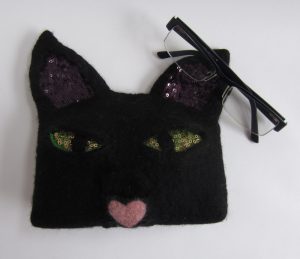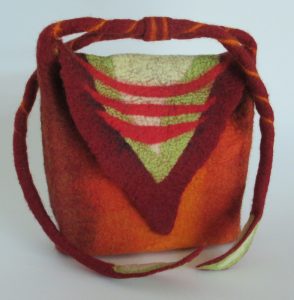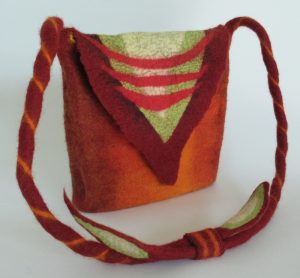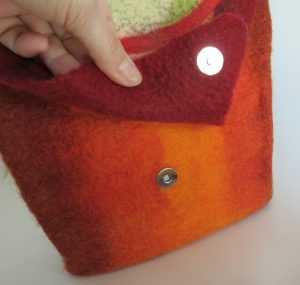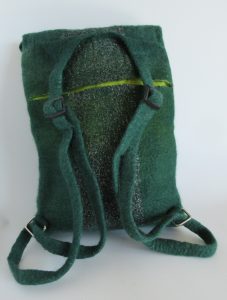Covid has had a negative impact on so many areas of our lives but the joy of human ingenuity means that the solutions we find to these unwelcome problems can lead to some unanticipated benefits.
Normally the International Feltmakers Association (IFA) holds their AGM as an “in person” meeting in the second quarter of the year. This year I was very much looking forward to spending a few days with lovely, like-minded fibre enthusiasts at Felletin in France, the workshops organised by the IFA are always excellent and you are guaranteed to make new friends at the social events.
Then Covid raised its ugly head and a plan B was needed….
This year, for the first time, the IFA has commissioned a series of free videos, for their members’ exclusive viewing, from four internationally renowned feltmakers. We will have opportunity to “meet” them live during the AGM weekend in advance of the video launch on YouTube.

If you are not already a member I can thoroughly recommend taking out membership, especially if you are based in the UK, as membership includes free Public Liability Insurance among other benefits. This link will take you a page detailing more of the benefits of membership and at the bottom is a button where you can sign up.
Below is an outline of the 4 tutors taking part, their bios and what they plan to share. The AGM will be over the weekend of 27/28th March 2021.
Nancy Ballesteros

Nancy lives in Australia and is artistic director and founder of Treetops Colour Harmonies. For over thirty years she has immersed herself in the science and study of wool, felting and colour theory. As an international tutor, she specialises in Nuno felt techniques and her recent focus is applying Fibonacci’s Design principles to feltmaking.
How Fibonacci’s Design Principals can help Reconnect your Creativity
There is a Natural Rhythm in things we consider beautiful. Leonardo Fibonacci, a 13th century Mathematician wrote about it, Leonardo Da Vinci used it when he painted Mona Lisa. The Golden Ratio, Fibonacci’s numbers… how could this help your creativity?
Nancy’s video will explore simple, practical ways to apply this powerful design principle to your felting and no maths is required!
Nicola Brown
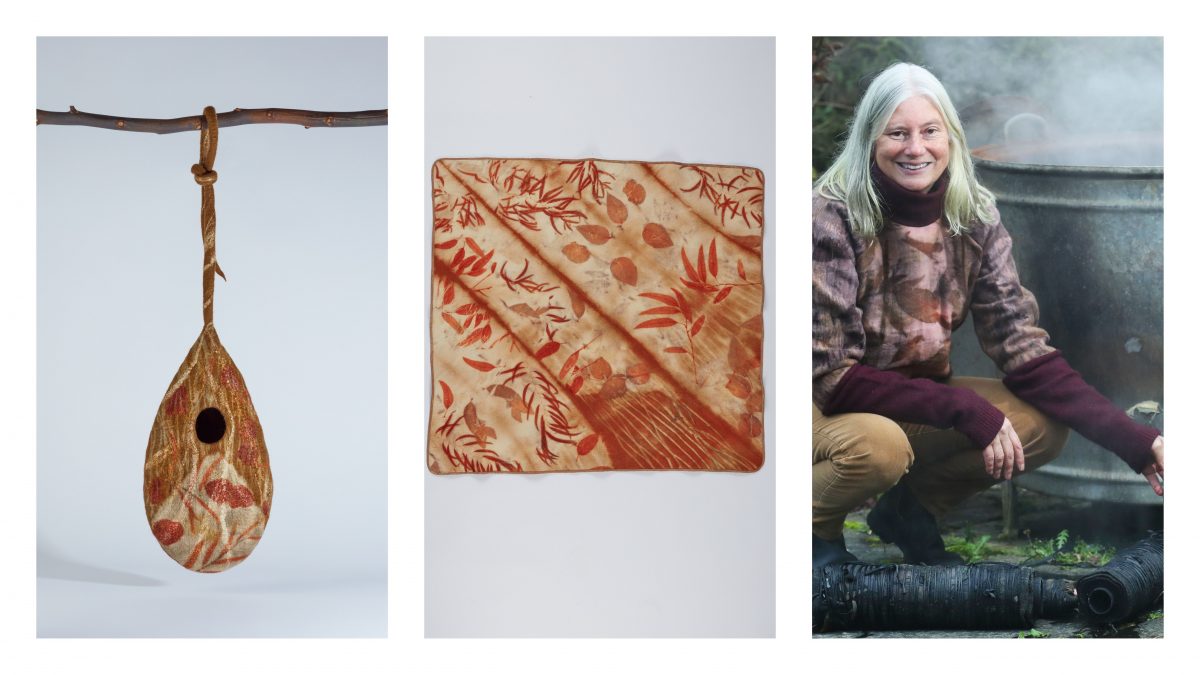
Three words describe my textile practice: simple, natural, crafted.
Since my introduction to felt and eco printing I’ve been on an exciting journey of discovery. Over time the sustainability of my work and teaching has deepened leading to new connections online and in person with like-minded individuals. The advent of Covid-19 means that keeping safe, staying local and living in harmony with the environment has never been more important.
For ReConnect I will share a series of 3 videos: where this journey began, an introduction to eco printing and an eco print/natural dye tutorial using locally sourced vegetation.
Fiona Duthie

Fiona Duthie is a Canadian feltmaker recognised for her dynamic, sculptural clothing and artwork. Fiona strives for excellence in design and technique, while furthering the medium of felt through the use of new material combinations.
Creative Sparks looks at reconnecting with simple techniques and familiar materials in a playful and exploratory way. Perfect for uplifting us out of a creative slump, or to refresh our existing design process. We explore sixteen creative prompts while making a beautiful, harmonious set of felt tiles. Each prompt can be taken beyond this project and used to add creative sparks to any felt project.
Judit Pócs
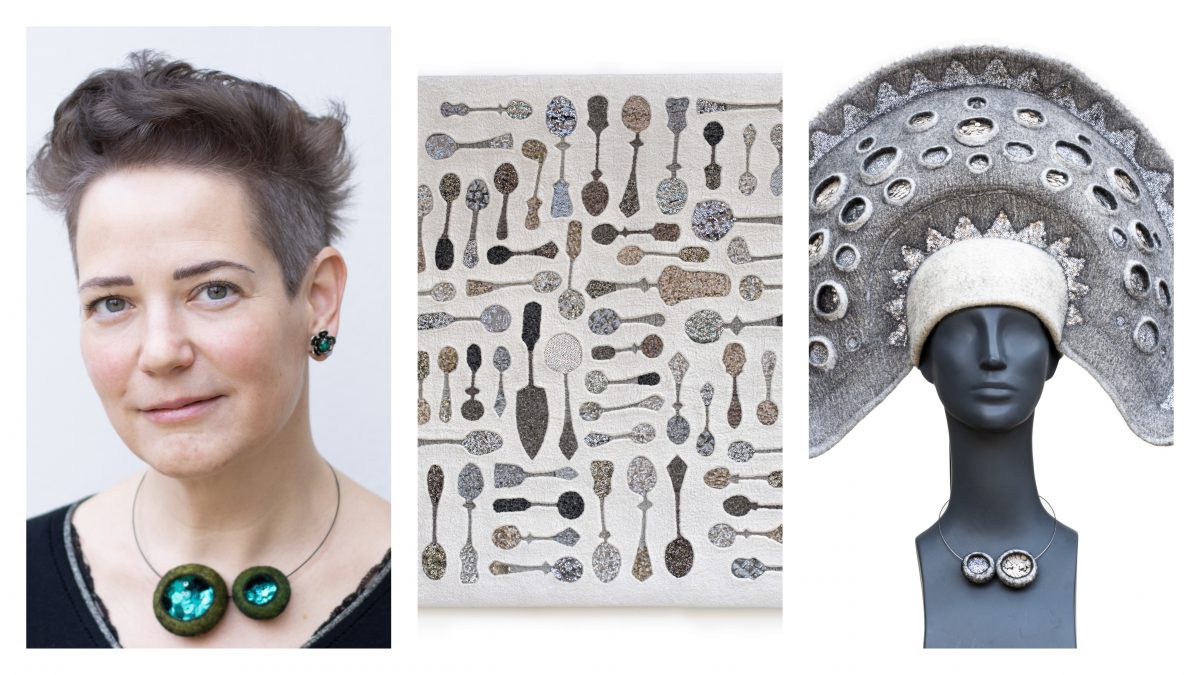
Spatiality, Material Use, Recycling
I’m a Hungarian felt artist, who experiments a lot to develop felt in 3D and to achieve new, interesting surfaces.
It has always been a challenge for me to see how felt can be transcendent, whether stone-like or metallic. I find it very exciting when a particular substance goes beyond itself. When designing a surface, I usually push these boundaries.
Recycling is also a feature of my work, I often cut old, used clothes and incorporate the pieces into my wall hangings and other creations and more recently I also recycle coffee capsules into my works.

